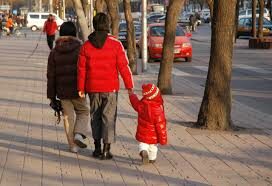The demographic winter weighs on China as the sky looms over Beijing, yellow and gray with pollution. Chinese couples in their childbearing age do not keep up with the increasing age of the population and with the generational turnover. They don’t have children, at least not enough.
Data issued by National Bureau of Statistics are significant. In 2019 the birth rate was 10.48 births per 1,000 inhabitants, reaching the lowest level since 1949, the birth year of the People’s Republic of China: 14.65 million children were born, 580 thousand fewer than the previous year, 2018. Compared to 2017, births fell by 2.5 million: impressive numbers, on the brink of denatality.
Similar figures had only been seen during the Great Leap Forward (1958-1961), when Mao Zedong (1893-1976) and his insane economic policy to develop the country’s industrial apparatus starved millions of citizens to death.
The projections say that by 2030 at least a quarter of China’s population will be over 60 years old, compared with 18% in 2019 and 13% in 2010, leading to a collapse in workforce availability and sky-high social costs.
This is what worries Beijing: China cannot face it, unless it can count on huge masses of low-cost, high-yield workers. How else could you build a hospital in ten days, as is happening now for the emergency of the coronavirus coming from Wuhan?
And this isn’t all. The pension system is in crisis: the retirement age is extremely low (60 years men, 50 or 55 women depending on the type of tasks), as well as the amount of the subsidy. A tide of Yuan is coming out of state coffers to pay pensions, yet pensioners need their children’s help to survive: how will they do when those children who pay pensions and help their parents will no longer be there or will not be numerous enough?
First the “one-child” policy, then hedonism
One of the reasons for the demographic decline is certainly the “one child” policy law, established in 1980 by Deng Xiaoping (1904-1997) and repealed only from 2015, when the regime changed it, allowing couples to have two “unique children” after creating, over the years, a chasm of at least 400 million unborn. Important economic sanctions continue to be applied if they conceive of a third one. The repeal of the law, however, has not brought the desired results: the population does not grow and couples give up giving birth to their children.
But one cannot ignore another aspect that concerns the big modern cities and their upper class (or “wannabe”): the mentalities have changed. Just as in the West, now that it has been unequivocally established that “enrichment is glorious”, as Deng said, the generation that today should be concerned about the next one is occupied in anything else.
This is confirmed by marketing research. Already in 2018 China’s Evolving Consumers: Eight Intimate Portaits by analyst Tom Nunlist — of which we also note the brilliant analysis by the Italian specialist Nicoletta Ferro on China Files — outlined a very particular target of customers. These are young people, singles or couples, who live in big cities, who are “in their careers” and who enjoy a job that allows them to imagine a future of defianties with no desire to have children, or at least no more than one. It also happens in a context of social competition and of struggle for wealth, where the best schools are very expensive and the performance demands frightening, at every level. A niche, of course, but sometimes the élites (in any capacity) trace the way. Beijing’s anxiety grows. Will the National People’s Assembly take care of this in March? But the real bet is: how?
